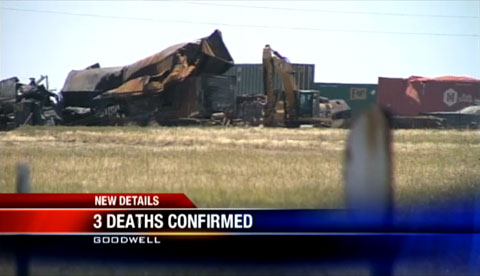TULSA, Okla. — The National Transportation Safety Board (NTSB) has speculated that human error may be the cause of the June 24 fiery head-on collision of two Union Pacific trains that occurred just east of Goodwell, Oklahoma.

Authorities told the media that it appears signals were working properly at the time of the wreck, and that one of the trains passing through the flat landscape should have pulled onto a side track. The NTSB said there was “no survivable space” in the locomotives’ cabins following the collision.
NTSB official Mark Rosekind said that the NTSB could release a preliminary report within two weeks, though it could be a year before a final report is available.
According to an article at NPR:
Bob Jarvis, a transportation law professor at Nova Southeastern University in Fort Lauderdale, Fla., noted that human error can go beyond the train crew.
“In those kinds of accidents you really start to think about who let these two trains leave the yard. Who was monitoring? That’s likely going to be human error back where the pretty lights (of a communications center) are,” Jarvis said. “Was there a technical failure in the control room or was somebody not watching?”
“But something can happen with the signals, too,” added Carmichael, who now works with the University of Denver’s Intermodal Transportation Institute.
“The signal system is not foolproof,” said retired Burlington Northern-Santa Fe train engineer John Hiatt, who is now a rail-accident investigator with a Minnesota law firm.
The incident remains under investigation at this time.
Posted by FELA lawyer Gordon & Elias, LLP.